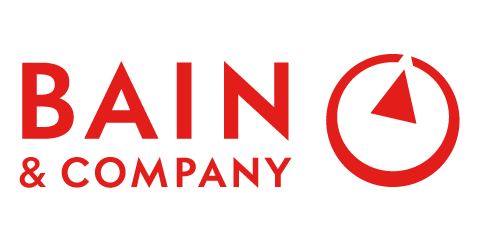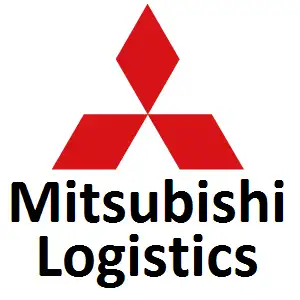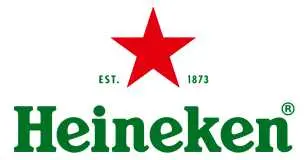
Heating Equipment Market Size, Growth and Forecast 2034
Heating Equipment Market Growth, Size, Trends Analysis - By Product, By Application - Regional Outlook, Competitive Strategies and Segment Forecast to 2034
| Published: Jun-2025 | Report ID: MACH2505 | Pages: 1 - 230 | Formats*: |
| Category : Equipment and Machinery | |||
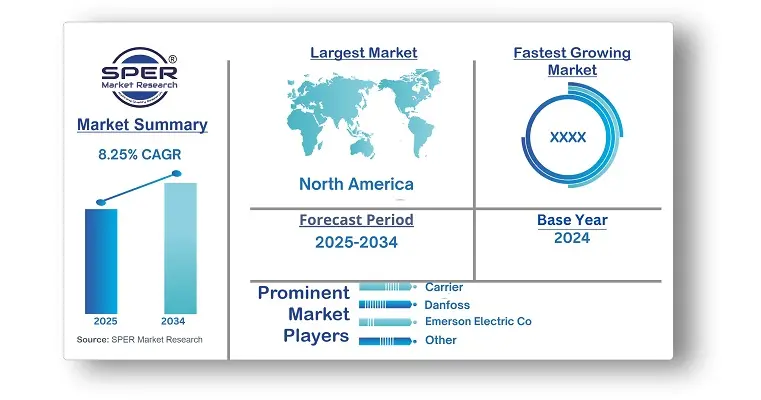
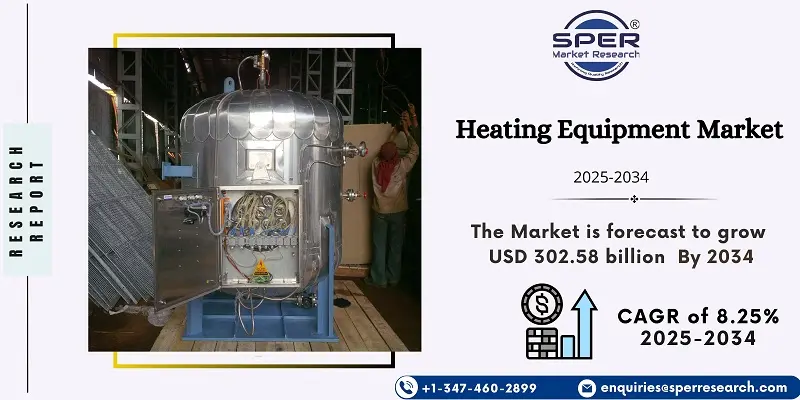
- Midea launched their Energy-Efficient Heat Pump Water Heater (HPWH) in North America in January 2025. This cutting-edge device emphasises switching from traditional water heating techniques to more environmentally friendly, energy-efficient air-source technology.
- A new range of residential air-to-water heat pumps for single-family homes using propane (R290) as the refrigerant was introduced by Daikin in December 2024. The growing demand for sustainable and energy-efficient heating technologies in residential markets is supported by this eco-friendly solution, which provides effective heating and hot water.
| Report Metric | Details |
| Market size available for years | 2021-2034 |
| Base year considered | 2024 |
| Forecast period | 2025-2034 |
| Segments covered | By Product, By Application |
| Regions covered | North America, Latin America, Asia-Pacific, Europe, and Middle East & Africa |
| Companies Covered | Carrier, Daikin Industries, Ltd, Danfoss, Emerson Electric Co, Fujitsu, Haier (General Electric), Hitachi, Ltd, Johnson Controls, Inc, Lennox International, LG Electronics, Inc. |
- Global Heating Equipment Market Size (FY’2021-FY’2034)
- Overview of Global Heating Equipment Market
- Segmentation of Global Heating Equipment Market by Product (Heat Pump, Unitary Heaters, Warm Air Furnaces)
- Segmentation of Global Heating Equipment Market by Application (Residential, Commercial)
- Statistical Snap of Global Heating Equipment Market
- Expansion Analysis of Global Heating Equipment Market
- Problems and Obstacles in Global Heating Equipment Market
- Competitive Landscape in the Global Heating Equipment Market
- Details on Current Investment in Global Heating Equipment Market
- Competitive Analysis of Global Heating Equipment Market
- Prominent Players in the Global Heating Equipment Market
- SWOT Analysis of Global Heating Equipment Market
- Global Heating Equipment Market Future Outlook and Projections (FY’2025-FY’2034)
- Recommendations from Analyst
- 1.1. Scope of the report
- 1.2. Market segment analysis
- 2.1. Research data source
- 2.1.1. Secondary Data
- 2.1.2. Primary Data
- 2.1.3. SPERs internal database
- 2.1.4. Premium insight from KOLs
- 2.2. Market size estimation
- 2.2.1. Top-down and Bottom-up approach
- 2.3. Data triangulation
- 4.1. Driver, Restraint, Opportunity and Challenges analysis
- 4.1.1. Drivers
- 4.1.2. Restraints
- 4.1.3. Opportunities
- 4.1.4. Challenges
- 5.1. SWOT Analysis
- 5.1.1. Strengths
- 5.1.2. Weaknesses
- 5.1.3. Opportunities
- 5.1.4. Threats
- 5.2. PESTEL Analysis
- 5.2.1. Political Landscape
- 5.2.2. Economic Landscape
- 5.2.3. Social Landscape
- 5.2.4. Technological Landscape
- 5.2.5. Environmental Landscape
- 5.2.6. Legal Landscape
- 5.3. PORTERs Five Forces
- 5.3.1. Bargaining power of suppliers
- 5.3.2. Bargaining power of buyers
- 5.3.3. Threat of Substitute
- 5.3.4. Threat of new entrant
- 5.3.5. Competitive rivalry
- 5.4. Heat Map Analysis
- 6.1. Global Heating Equipment Market Manufacturing Base Distribution, Sales Area, Product Type
- 6.2. Mergers & Acquisitions, Partnerships, Product Launch, and Collaboration in Global Heating Equipment Market
- 7.1. Heat Pump
- 7.2. Unitary Heaters
- 7.3. Warm Air Furnace
- 7.4. Space Heating Boiler
- 8.1. Residential
- 8.2. Commercial
- 8.3. Industrial
- 9.1. Global Heating Equipment Market Size and Market Share
- 10.1. Asia-Pacific
- 10.1.1. Australia
- 10.1.2. China
- 10.1.3. India
- 10.1.4. Japan
- 10.1.5. South Korea
- 10.1.6. Rest of Asia-Pacific
- 10.2. Europe
- 10.2.1. France
- 10.2.2. Germany
- 10.2.3. Italy
- 10.2.4. Spain
- 10.2.5. United Kingdom
- 10.2.6. Rest of Europe
- 10.3. Middle East and Africa
- 10.3.1. Kingdom of Saudi Arabia
- 10.3.2. United Arab Emirates
- 10.3.3. Qatar
- 10.3.4. South Africa
- 10.3.5. Egypt
- 10.3.6. Morocco
- 10.3.7. Nigeria
- 10.3.8. Rest of Middle-East and Africa
- 10.4. North America
- 10.4.1.Canada
- 10.4.2. Mexico
- 10.4.3. United States
- 10.5. Latin America
- 10.5.1. Argentina
- 10.5.2. Brazil
- 10.5.3. Rest of Latin America
- 11.1. Carrier
- 11.1.1. Company details
- 11.1.2.Financial outlook
- 11.1.3. Product summary
- 11.1.4. Recent developments
- 11.2. Daikin Industries, Ltd
- 11.2.1. Company details
- 11.2.2. Financial outlook
- 11.2.3. Product summary
- 11.2.4. Recent developments
- 11.3. Danfoss
- 11.3.1. Company details
- 11.3.2. Financial outlook
- 11.3.3. Product summary
- 11.3.4. Recent developments
- 11.4. Emerson Electric Co
- 11.4.1. Company details
- 11.4.2. Financial outlook
- 11.4.3. Product summary
- 11.4.4. Recent developments
- 11.5. Fujitsu
- 11.5.1. Company details
- 11.5.2. Financial outlook
- 11.5.3. Product summary
- 11.5.4. Recent developments
- 11.6. Haier (General Electric)
- 11.6.1. Company details
- 11.6.2. Financial outlook
- 11.6.3. Product summary
- 11.6.4. Recent developments
- 11.7. Hitachi, Ltd
- 11.7.1. Company details
- 11.7.2. Financial outlook
- 11.7.3.Product summary
- 11.7.4. Recent developments
- 11.8. Johnson Controls, Inc
- 11.8.1. Company details
- 11.8.2. Financial outlook
- 11.8.3. Product summary
- 11.8.4. Recent developments
- 11.9. Lennox International
- 11.9.1. Company details
- 11.9.2. Financial outlook
- 11.9.3. Product summary
- 11.9.4. Recent developments
- 11.10. LG Electronics, Inc
- 11.10.1. Company details
- 11.10.2. Financial outlook
- 11.10.3. Product summary
- 11.10.4. Recent developments
- 11.11. Others
SPER Market Research’s methodology uses great emphasis on primary research to ensure that the market intelligence insights are up to date, reliable and accurate. Primary interviews are done with players involved in each phase of a supply chain to analyze the market forecasting. The secondary research method is used to help you fully understand how the future markets and the spending patterns look likes.
The report is based on in-depth qualitative and quantitative analysis of the Product Market. The quantitative analysis involves the application of various projection and sampling techniques. The qualitative analysis involves primary interviews, surveys, and vendor briefings. The data gathered as a result of these processes are validated through experts opinion. Our research methodology entails an ideal mixture of primary and secondary initiatives.
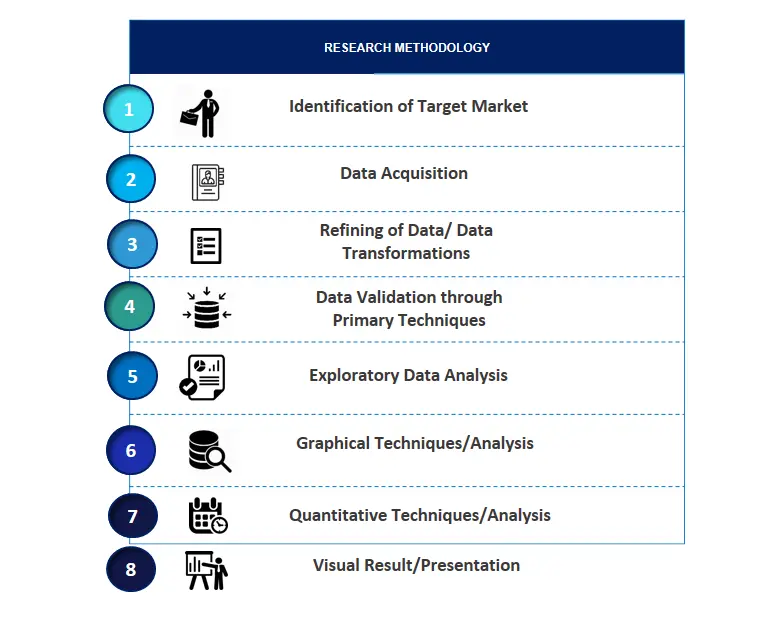
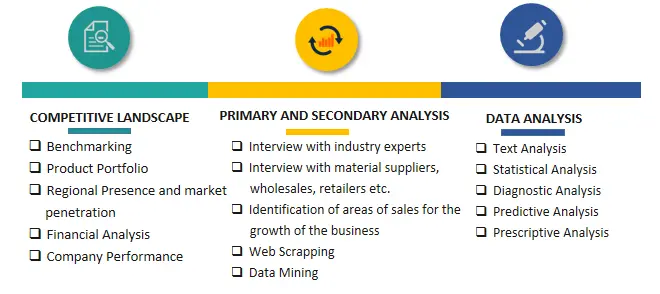

Frequently Asked Questions About This Report
PLACE AN ORDER
Year End Discount
Sample Report
Pre-Purchase Inquiry
NEED CUSTOMIZATION?
Request CustomizationCALL OR EMAIL US
100% Secure Payment






Related Reports
Our Global Clients
Our data-driven insights have influenced the strategy of 200+ reputed companies across the globe.







